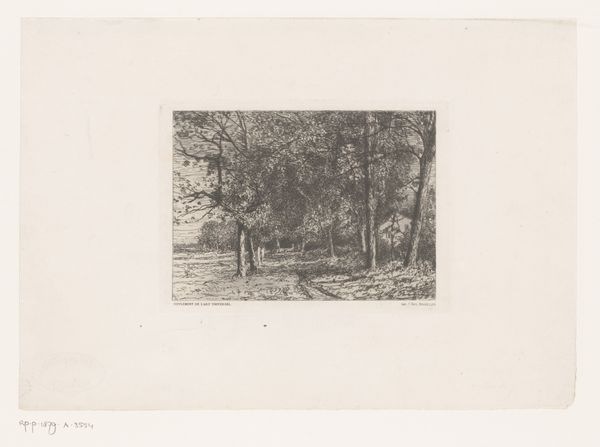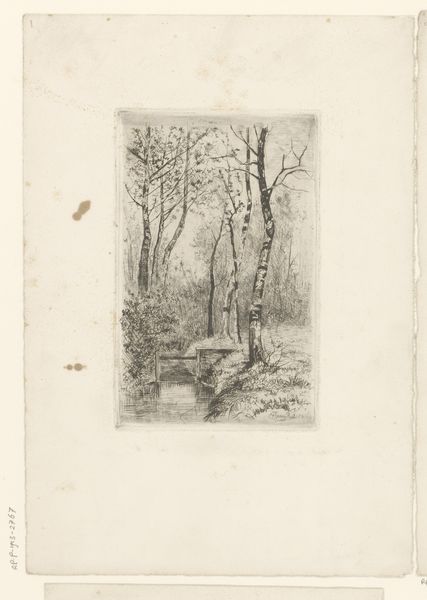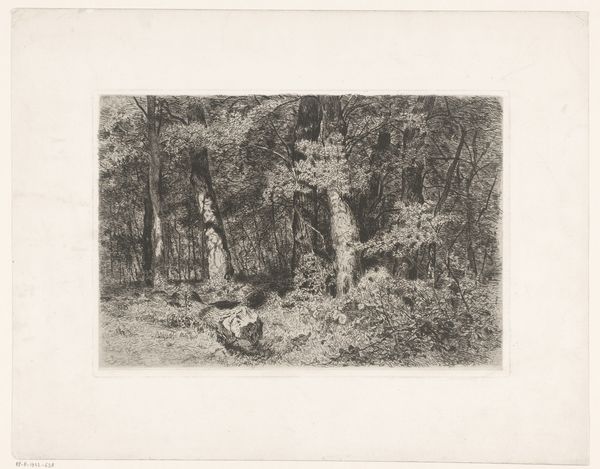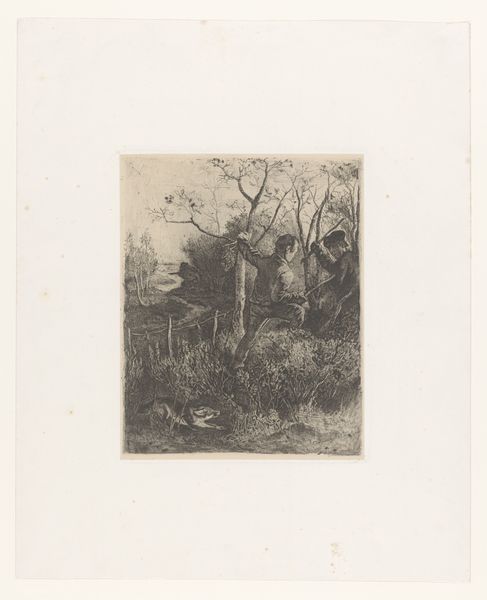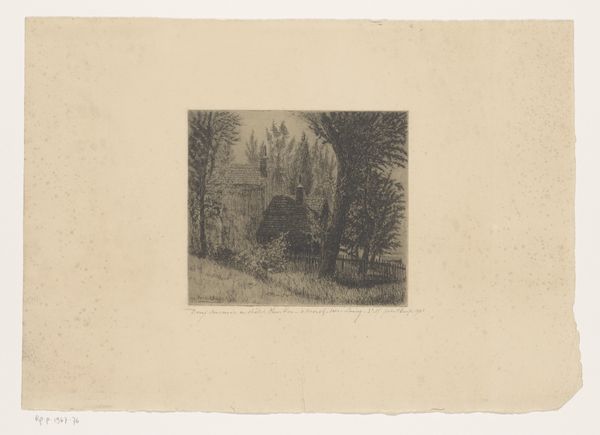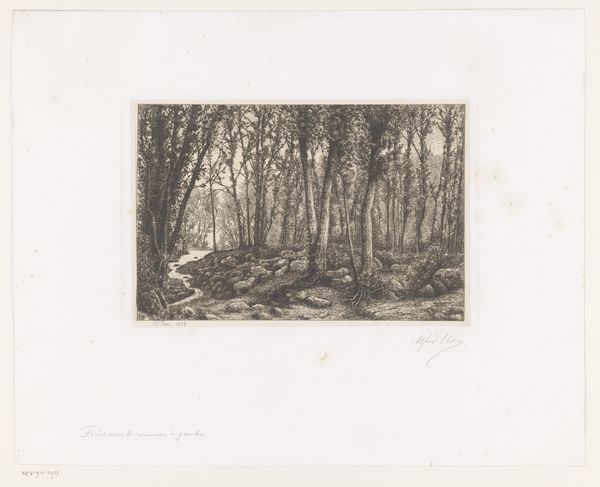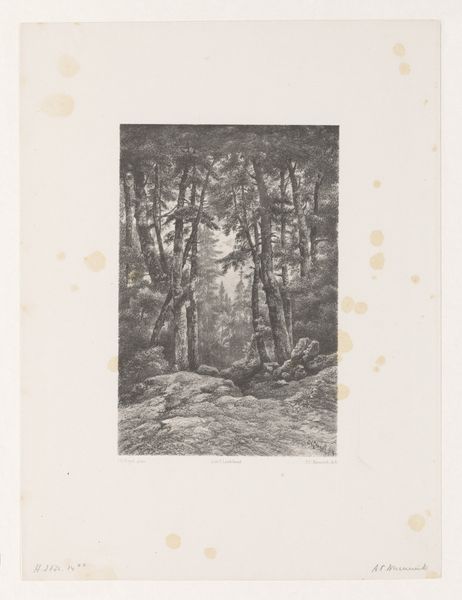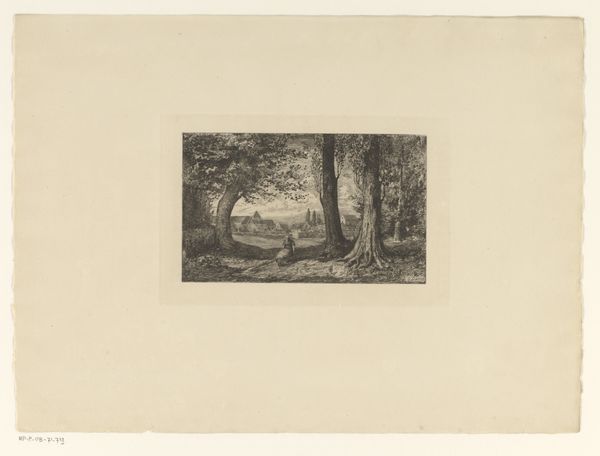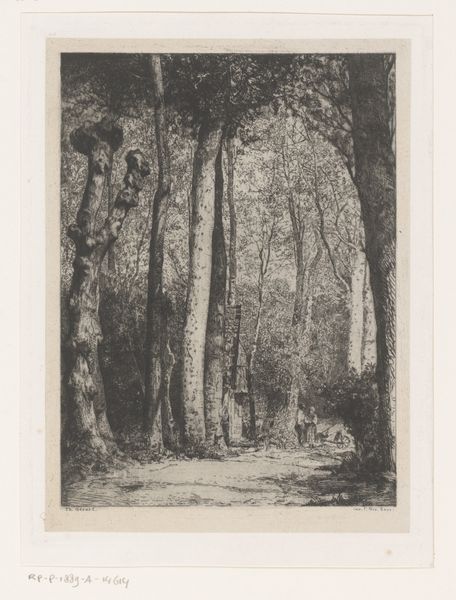
print, etching
# print
#
etching
#
landscape
#
realism
Dimensions: height 134 mm, width 175 mm
Copyright: Rijks Museum: Open Domain
Louis Adolphe Jacobs created this etching of a path in a densely overgrown forest. As an etching, its origins are in labor, and the effects of acid on metal. The image begins as a metal plate, likely copper or zinc, coated with a waxy, acid-resistant ground. The artist then draws through this ground with a sharp needle, exposing the metal. The plate is immersed in acid, which bites into the exposed lines, creating grooves. The longer it’s bathed, the deeper the lines become, allowing for darker, more pronounced marks. The plate is then inked, and wiped clean, with ink remaining only in the etched lines. Finally, it’s pressed onto paper, transferring the image. The process allows for delicate lines and textures, seen here in the dense foliage and subtle gradations of light. Every line is a result of labor and chemical action. The rich blacks and grays, the depth of the etched lines, and the texture of the paper all contribute to the atmosphere of the forest. By understanding the processes by which art is made, we recognize the hand of the artist, and these processes collapse the distinction between art and craft.
Comments
No comments
Be the first to comment and join the conversation on the ultimate creative platform.
